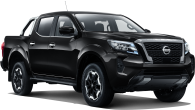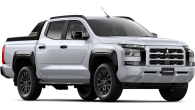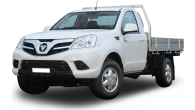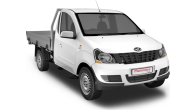Imported one-tonne utes have become the staple of local trades and industries which want a tough work vehicle that can carry a decent load around the job site, and Holden's Rodeo is one of the leading models. The Rodeo showed up on the local landscape in the 1970s when Holden utes began to lose favour with tradies.
They had simply become too expensive compared to the imported utes which, despite being a bit rough and rugged, went on to conquer the market. Local utes have made a comeback in recent times, but they're now more a lifestyle vehicle for people who want a dual-purpose daily driving/weekend escape car.
MODEL WATCH
The RA Rodeo hit the market in 2003. It was bigger, more powerful, better equipped and safer than its predecessors. Built on a tough chassis, the RA Rodeo boasted substantially increased torsional rigidity, up by as much as 60 per cent, and that equates to better crash protection and a more stable platform for better handling.
The RA's larger external dimensions translated into substantially more space inside the Rodeo's new cabs. Holden offered three engines: a 2.4-litre single overhead camshaft fuel-injected four-cylinder (94kW at 4800rpm and 207Nm at 3200rpm), a 3.5-litre all-alloy double overhead camshaft V6 (147kW at 5400rpm and 280Nm at 3000rpm), and a 3.0-litre turbocharged four-cylinder diesel (96kW at 3800rpm and 294Nm at 2400rpm).
There was a choice of manual or automatic transmissions across the range, and a choice of two or four-wheel-drive, the latter with a choice of two-wheel-drive, and high and low range four-wheel-drive. All models, except for the entry level DX 2.4-litre two-wheel-drive which has coil front springs, have torsion bars at the front and heavy duty leaf springs down back.
Holden offered three models: the DX entry level, the LX and the range topping LT, three body styles, single cab, space cab and crew cab, with a range of two and 4WD variants. In total, there were 56 model variants to choose from.
IN THE SHOP
As the Rodeo is essentially a work vehicle it is important to look for signs of damage caused in the daily grind on the job site. Look for dings and scrapes, inside and out. Be on the alert for wear and tear from big burly bodies. Check for such things as rips in the trim and broken plastics on controls often used and sometimes abused.
Not surprisingly for a vehicle meant to carry a substantial load, the Rodeo's ride is firm, although it gets better when there's a load in the back. Although noisy, the diesel is the pick of the engines. It has lots of get up and go and returns decent fuel consumption. The V6 has even better performance, but is a petrol guzzler.
If you prefer the V6 it might be worth switching it to dual-fuel to cut running costs. Holden has a dual-fuel system which is a sequential vapour-injection system that offers equivalent power and performance whether on petrol or gas.
CRUNCH TIME
Increased chassis rigidity proves a stable platform for responsive handling that increases the ability to avoid a crash, and the Rodeo has side intrusion bars for protection in side impacts. ABS adds another level of crash avoidance on the LT which also boasts dual front airbags in its list of standard features. Airbags are also optional on the LX models.
HOLDEN RODEO RA 2003
- Roomy interior with larger cabin
- Strong masculine styling.
- Thirsty V6 engine
- Hard ride, particularly when empty
- Economical diesel engine top choice
- Too wide turning circle
Rating
15/20 Tough work ute with goodperformance and cabin, but petrol-guzzling V6 engine.
Holden Rodeo 2003: DX
| Engine Type | Inline 4, 2.4L |
|---|---|
| Fuel Type | Unleaded Petrol |
| Fuel Efficiency | 0.0L/100km (combined) |
| Seating | 3 |
| Price From | $4,070 - $5,940 |
Pricing Guides

Range and Specs
| Vehicle | Specs | Price* |
|---|---|---|
| DX | 2.2L, Unleaded Petrol, 5 SPEED MANUAL | $2,640 - $4,070 |
| DX | 3.0L, Diesel, 5 SPEED MANUAL | $3,190 - $4,950 |
| LX | 2.8L, Diesel, 5 SPEED MANUAL | $3,300 - $5,170 |


.jpg)

.jpg)








.jpg)

